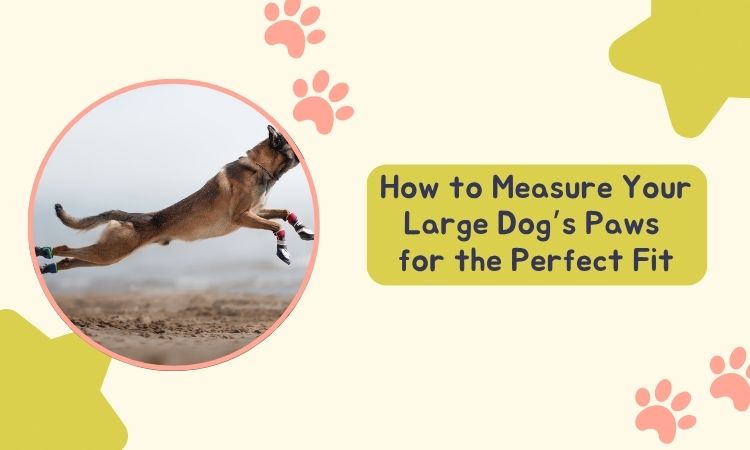Finding the right dog shoes can be tricky—especially for larger breeds with oversized paws. Whether you’re preparing for long hikes, icy sidewalks, or hot pavements, correctly measuring your large dog’s paws ensures a snug, comfortable fit that protects against injuries and irritation.
In this guide, you’ll learn exactly how to measure dog paws for large breed dogs, what tools to use, and how to choose footwear that supports your pup’s movement and safety.
Why Accurate Paw Measurement Matters for Large Breeds
Unlike small dogs, large breed dogs like Great Danes, German Shepherds, and Rottweilers exert more pressure on their paws. Ill-fitting shoes can:
- Cause blisters or sores
- Slide off during activity
- Restrict blood flow or joint movement
That’s why getting the right paw size is not just a matter of comfort—it’s a matter of protection and performance.
Tools You’ll Need
Before starting, gather these simple items:
- A blank sheet of paper
- A pen or marker
- A ruler or measuring tape
- Your dog’s favorite treat (to keep them still!)
Step-by-Step: How to Measure Dog Paws (Large Breed)
Step 1: Choose a Flat, Non-Slip Surface
Place your large dog on a flat, stable surface. This helps ensure natural paw spread and avoids mismeasurement.
Step 2: Trace the Paw
Lightly elevate a paw and position it on the paper. Press down slightly to mimic weight-bearing. Trace around the entire paw, including the longest toe and widest pad area.
Tip: Large dogs often have fur between their pads—be sure you’re tracing the actual paw, not the fluff.
Step 3: Measure Length and Width
Using a ruler, measure:
- Length:From the tip of the longest toenail to the rear of the paw pad.
- Width: At the widest part of the paw.
Record these in both inches and centimeters—some brands use different measurement systems.
Step 4: Repeat for All Paws
Don’t assume all four paws are identical! In larger breeds, front paws are often slightly wider than back paws. Measure each paw and choose sizes accordingly.
Choosing the Right Fit for Your Big Dog
Once you have the measurements:
- Compare them to the sizing chart provided by your dog shoe brand.
- If your dog falls between sizes, always size up—a tight shoe can cause friction and discomfort.
Neo Paws, for example, offers performance dog shoes with ergonomic designs built specifically for large and giant breeds. Always refer to their breed-specific size guide when in doubt.
Common Mistakes to Avoid
- Guessing based on breed (every dog is unique)
- Measuring only one paw
- Forgetting toenail length
- Measuring when the dog is not standing naturally
Best Time to Measure Your Dog’s Paws
Try to measure when your dog is calm—after a walk or play session works best. Avoid doing it right after grooming, as paw fur might be trimmed too short and give inaccurate results.
Final Thoughts
Accurately measuring your dog’s paws is the first step toward giving your large breed the protection they need. Whether you’re in North America, Europe, or anywhere with rugged terrain or seasonal extremes, having the right fit can transform your pet’s comfort, confidence, and joint health.
Need Help Finding the Right Fit?
Explore breed-specific sizing tools and durable large breed dog shoes at Neo Paws—trusted by dog lovers worldwide for protection and performance.








